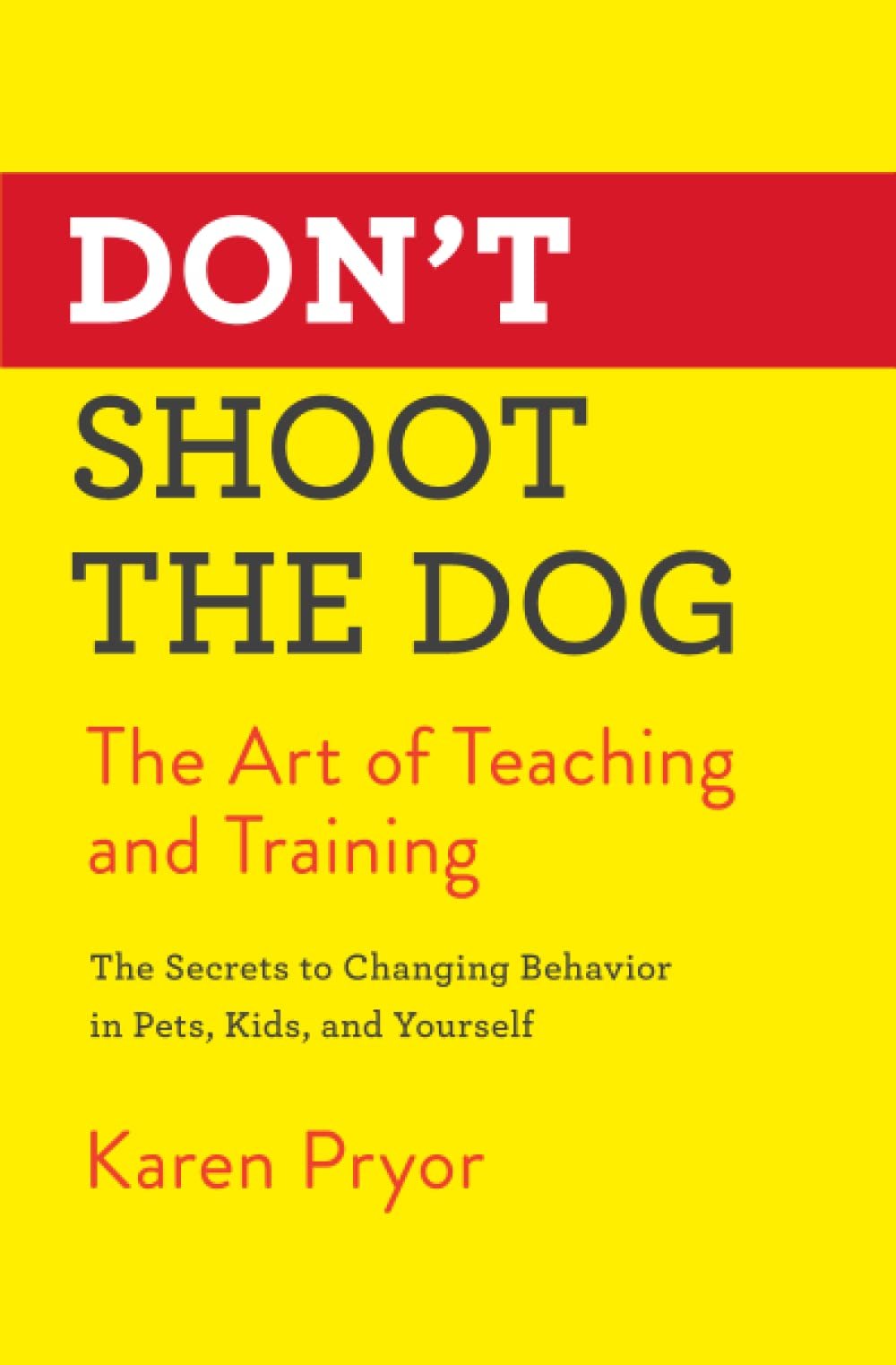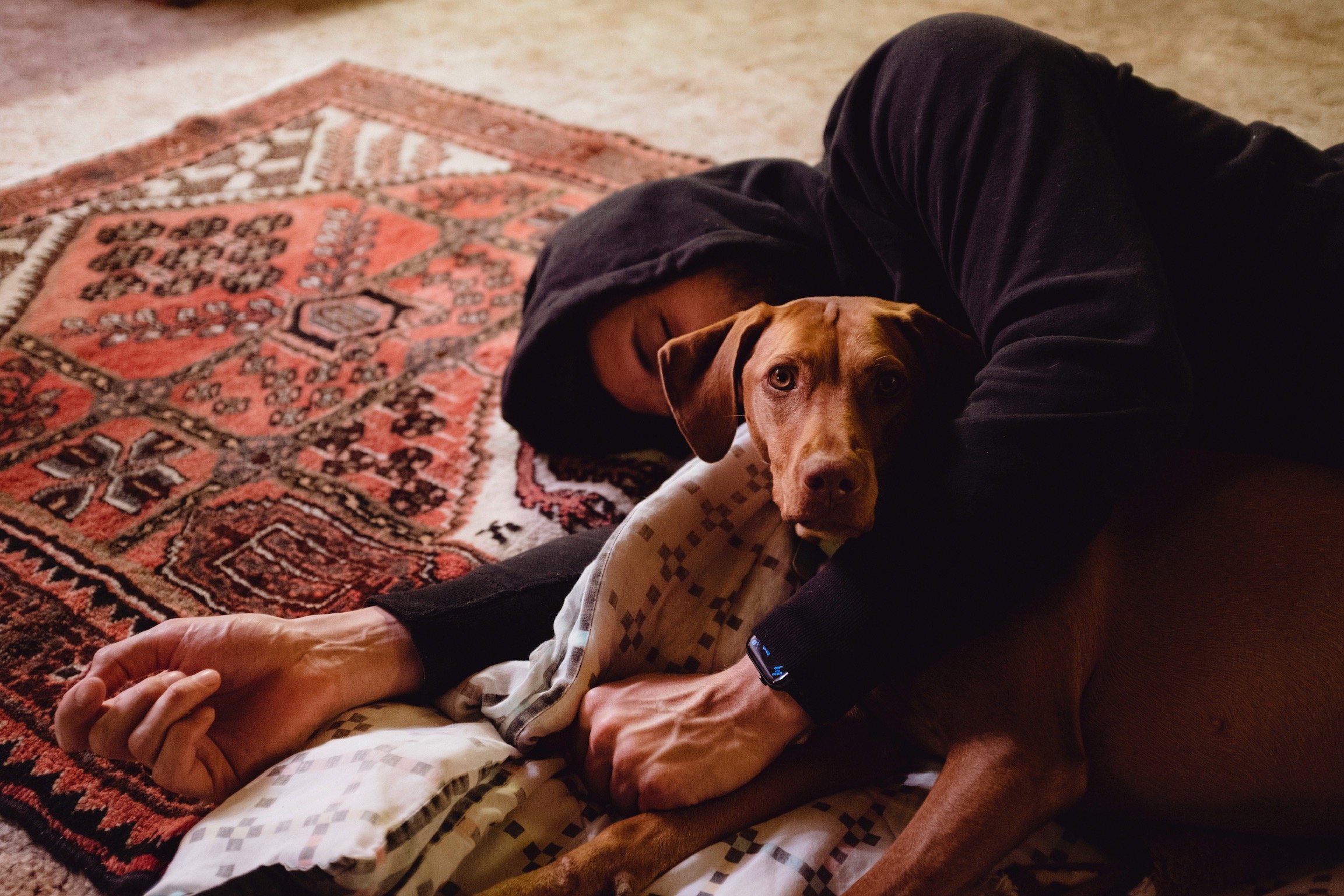This Dog Training Book Can Teach You Product Design
When I was a student, I was lucky enough to be accepted into a course taught by one of the most famous professors at Stanford, BJ Fogg. BJ had recently been in the news for his product design courses which taught students how to quickly make engaging products. BJ’s classes led a handful of students to generate millions in revenue or sell new companies. As The New York Times called it, it was The Class That Built Apps, and Fortunes.
In 2012, BJ was teaching a new course called “Behavior Design for Better Health”. Instead of focusing solely on creating engaging products, this new course focused on teaching students how to make engaging products that helped people become healthier.
When the course began, I was surprised by the reading material. I was expecting a list of books about psychology, design, and fitness, but there was only one book: Don’t Shoot the Dog by Karen Pryor. At first, I thought it must be an esoteric title for a book about product design.
No, it was literally a dog training book.
There’s a reason BJ had us read a book on dog training. Changing a dog’s behavior is similar to changing a user’s behavior. Training dogs requires that you communicate with a limited tool set and limited forms of interactions. Changing a user’s behavior requires that you communicate through the tools afforded through your product.
Since reading Don’t Shoot the Dog, I have noticed Pryor’s training principles applied in successfully engaging products. We’ve applied many of the principles in building Pantheon (and I’ve used the principles to successfully train my pandemic puppy). There are many lessons from the book to abstract and apply to products, but here are a few of the most powerful ones I discovered:
Reinforcement is a Powerful Tool for Creating Behavior
How exactly you create new behaviors in others is one of the most discussed topics in the tech industry. If you can develop a new behavior in a person to use your product, your product will grow. There are countless ideas around how exactly to do this, but one of the most effective is reinforcement.
Don’t Shoot the Dog’s training program revolves around reinforcement. As Pryor defines it, a reinforcer is “anything that, occurring in conjunction with an act, tends to increase the probability that the act will occur again.”
In dog training, reinforcement is often a treat. Other tools include play, toys, or prong collars. Whatever the tool, the reinforcer must occur with the behavior you want to occur again. If a dog sits, you need to reinforce as soon as their butt touches the ground. Even a minute later is too late. If something good happens when a dog sits, the dog will associate the action with the reward, and be much more likely to sit to earn more rewards.
The same goes for users of a product. If a user applies an artistic filter to their picture and they see the picture show up on their feed instantly after posting it, they will be more likely to post pictures again. If a user gets positive affirmations in the form of Likes and comments shortly after posting a picture, their propensity to post pictures will increase even further.
The challenge for product designers is in delivering the reinforcement as the user completes the action. This isn’t possible for all actions you might want a user to take, especially if the behaviors happen off your product, which is where conditioned reinforcers become useful.
Conditioned Reinforcers Allow You to Create Behavior When Rewards Are Impossible to Deliver
It is sometimes impossible to provide your chosen reinforcer as soon as the desired behavior occurs. If the desired behavior is for a dog to retrieve a ball, the ball will be in between the dog’s mouth and the treat the moment they pick the ball up. In these instances, you need to use a substitute reinforcer that can be delivered in a more timely fashion. Often, these reinforcers aren’t a valuable reward on their own. For these replacement reinforcers to work, they need to be associated with positive emotions through conditioning, and are called “conditioned reinforcers.”
In dog training, conditioned reinforcers are often clicker sounds or whistle sounds. You can create a conditioned reinforcer by rewarding a dog whenever the conditioned reinforcer occurs, for example, clicking a clicker and then immediately giving the dog a treat. With enough repetition, the dog will start to associate the clicker with rewards. Then, when the dog does the desired behavior, you can provide the conditioned reinforcer, like a click, in lieu of a reward (this is how clicker training works).
Conditioned reinforcers are incredibly common in software products. Nobody considers a buzz in their pocket to be a reward, but such notifications often mean that we have a new message from a friend or a new interaction on social media. After a while, we start to jump for our phones whenever they buzz because we know something good is on the other side. Notifications are conditioned reinforcers.
Successfully creating a way to reinforce your users when they aren’t on your product can be a powerful way to change behavior, but it’s not easy. Coming up with and delivering conditioned reinforcers is a valuable art.
Positive Reinforcement Works Better Than Negative Reinforcement.
As the title of the book suggests, negative reinforcement is not an effective tool for training dogs. Negative reinforcement works by subjecting a dog to an unpleasant or aversive stimulus, and stopping when the dog does the behavior you want them to do. Any sort of negative stimulus that comes after an unwanted behavior is just a punishment.
Delivering negative reinforcement successfully is not easy, and its not fun for you or the dog. Dogs are emotional creatures and will become fearful and distrustful of the trainer when its used too much.
Positive reinforcement is easier to deliver and it’s something both you and your dog can enjoy. Training a dog with positive reinforcement creates a deeper connection and trust between you.
The same principle applies to your customers. Products that chastise users for not doing the desired behavior are doing nothing more than punishing the user. Try punishing a user and see how quickly they churn off your product. Negative reinforcement creates distrust and annoyance. Everyone hates products that play ads frequently until the user upgrades to a paid plan.
Positive reinforcement is a more powerful tool that can not just create experience of fun and delight, but also establish a more trusting and positive relationship between users and a product. If you stick to positive reinforcement, users will associate positive experiences with your product, and will not only be more likely to do the behaviors you want them to do, but will also stick around for longer periods of time.
Designing with Kindness
One of the most important lessons from Don’t Shoot the Dog is that anger is often futile. It is useless to get mad or frustrated at a dog. They simply don’t understand. If you want to train a dog to do something new, you have to patiently communicate with it and guide it’s actions. If the dog doesn’t understand something, it’s the trainer’s fault, not the dogs.
Getting mad at your users is impossible, and while anger and frustration are tools we can use to communicate with other people (or dogs), those emotions simply can’t manifest themselves in products. Additionally, when you design a product, you can never blame your users when they don’t understand something. That solves nothing.
I was lucky to have read this book years before getting my own dog. I don’t see our users as dogs, but I do see our communication as limited. When I design, I see it as my responsibility to guide users, and I feel I can only succeed if I guide with empathy and kindness.
Many products have succeeded in changing behaviors, but not as many have succeeded in being kind to their users. We should aim to be successful at both.


